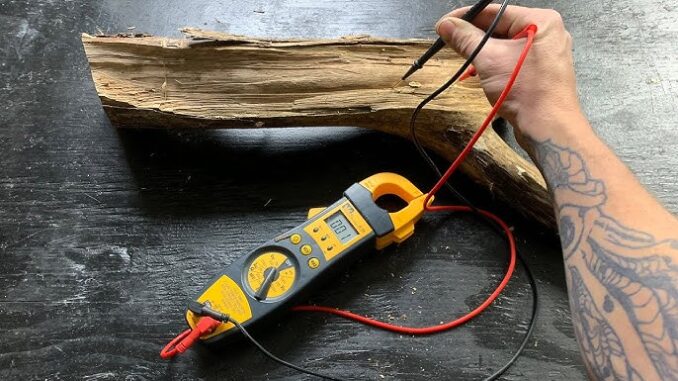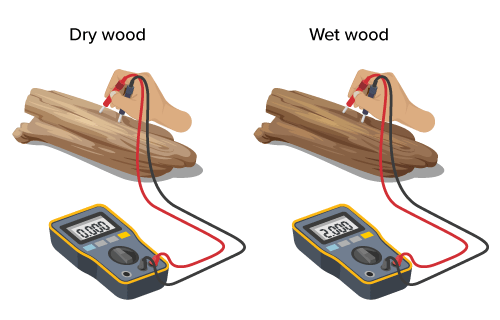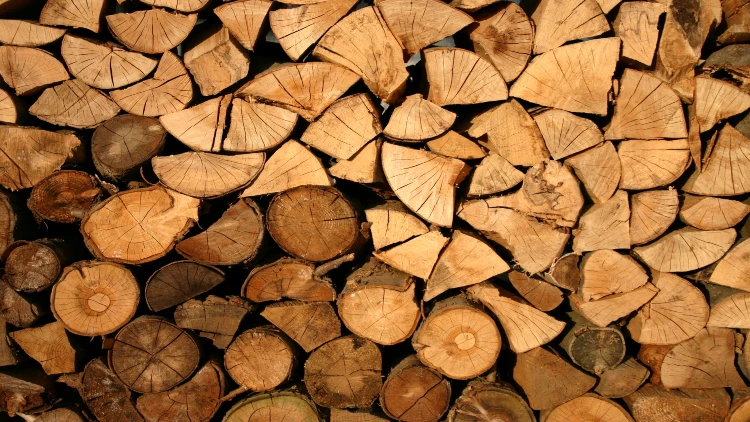
When we think of materials that interact with electricity, we often consider metals like copper or aluminum. However, one material that’s often overlooked in discussions of conductivity is wood. So, is wood a conductor or an insulator? Does it have the ability to carry an electric current, or does it resist it entirely? These questions are not just relevant to electrical engineers but to anyone curious about how electricity behaves in different materials. This article will explore the conductivity and insulation properties of wood in-depth. By the end, you will have a clear understanding of how wood interacts with electricity.
Introduction: Exploring the Role of Wood in Electricity
Before diving into the specifics of wood’s conductivity, it’s important to lay some groundwork. Electrical conductivity refers to a material’s ability to carry an electric current. Materials that allow electricity to pass through them are called conductors, while materials that resist or block the flow of electricity are insulators.
The question of whether wood is a conductor or an insulator is more complicated than it might first seem. While many people assume that wood, being a natural and organic material, cannot conduct electricity, the truth is not as clear-cut. In some conditions, wood can indeed conduct electricity, while in others, it acts as an excellent insulator. Let’s break down the science behind this.

What Does «Conductor» and «Insulator» Mean for Materials?
To properly answer the question of whether wood is a conductor, it’s helpful to understand what it means for a material to be a conductor or insulator.
- Conductors are materials that allow the free movement of electric charges. These materials have free electrons that can easily move through them. Common conductors include metals like copper, aluminum, and silver. These materials are excellent at carrying electricity because their atomic structure allows electrons to flow without much resistance.
- Insulators, on the other hand, are materials that resist the flow of electric current. These materials have tightly bound electrons that are not free to move. As a result, insulators block the flow of electricity and are essential for keeping electrical systems safe. Rubber, plastic, glass, and dry wood are all examples of insulators.
Understanding the difference between these two types of materials helps us better assess whether wood can conduct electricity or if it is better suited as an insulator.
The Structure of Wood: A Key to Its Conductivity
Now that we understand the basic concepts of conductors and insulators, we can take a closer look at the structure of wood itself. Wood is a natural material made primarily of cellulose, lignin, and hemicellulose. These components give wood its characteristic strength and durability.
Wood is also made up of cells that are primarily hollow and contain water. The water in wood plays a significant role in its electrical properties. To truly understand is wood a conductor or insulator, we must first look at the composition of these cells and how they interact with electricity.
The cellular structure of wood is largely responsible for its behavior when exposed to electricity. The walls of the cells are made from cellulose, a material that is a poor conductor of electricity in its pure form. However, this can change depending on the moisture content in the wood. The moisture inside the wood can act as a pathway for electricity to travel through. This is why wood’s conductivity can vary significantly based on its water content.
You might be interested in this article: Is Wood Renewable?
Is Wood a Conductor of Electricity? The Role of Moisture
One of the most important factors that determine whether is wood a conductor or insulator is its moisture content. When wood is completely dry, it is an excellent insulator. This is because the moisture inside the wood is gone, and the electrons in the cellulose are tightly bound, making it difficult for electricity to flow.
However, when wood becomes damp or wet, its conductivity changes. The water inside the wood can conduct electricity more easily, especially if the water contains minerals or ions. When wood absorbs water, it increases its ability to carry an electrical charge. This is why wet wood can be far more dangerous when it comes to electrical safety.
The moisture content in wood acts like a bridge for the electrical current, allowing it to flow through the material. In fact, if wood is soaked in water, it becomes much more conductive. This explains why wood, although mostly an insulator in its dry state, can act like a conductor when damp. Therefore, if you ask is wood a conductor or insulator, the answer depends largely on its moisture content.

The Science Behind Wood as an Insulator
Even though wood can conduct electricity when damp, it is still largely considered an insulator. This is particularly true when wood is dry. The reason wood acts as an insulator in its dry form is because of its low moisture content and the way the molecules are structured.
In dry wood, the cellulose fibers are tightly packed together, which prevents the free movement of electrons. This means that dry wood resists the flow of electric current and is considered an excellent material for insulation. Additionally, dry wood has a high resistance to heat, which further contributes to its insulating properties.
Wood is used as an insulator in a variety of applications, from electrical tools to construction materials. The reason wood is so effective as an insulator is due to the molecular structure that resists the flow of electricity, combined with its ability to absorb moisture from the environment. This makes dry wood an incredibly reliable material for situations where electricity needs to be safely contained or diverted.
You might be interested in this article: How Long Does Wood Glue Take to Dry
Real-World Applications: Wood’s Conductivity in Action
When considering is wood a conductor or insulator, it’s essential to explore its practical applications in the real world. While wood is not often used as a primary conductor of electricity, it does play a significant role in applications where its insulative properties are needed.
For example, electrical engineers often use wooden handles on tools and equipment. These wooden handles help protect workers from electrical shock because of the wood’s natural ability to block the flow of electricity. In this case, wood’s ability to act as an insulator is the key feature.
Additionally, wooden utility poles are used in power distribution networks. In dry conditions, the wood does not conduct electricity and thus provides a safe structure for power lines. However, in areas with high humidity or rainfall, the wood may absorb moisture and become more conductive, which can affect its safety as an insulating material. So, if you’re wondering is wood a conductor or insulator, the answer largely depends on its environmental conditions.
Another area where wood’s conductivity is important is in the construction of homes and buildings. While electrical wiring is typically insulated with plastic or rubber, wood is often used for structural support in homes. Its insulating properties help ensure that electricity remains safely contained within wires and does not pose a danger to the inhabitants.

Can Wood Be Used in Electrical Engineering?
As we consider wood’s conductivity further, we also need to address whether is wood a conductor or insulator in the field of electrical engineering. The short answer is yes, though wood is not a material typically chosen for its conductive properties.
In specialized cases, treated or engineered wood products can be used in certain electrical applications. These treatments may involve the impregnation of wood with chemicals that alter its electrical properties. For instance, pressure-treated wood can sometimes be made to resist electrical flow while still maintaining its structural integrity.
That said, wood is generally not a preferred material for electrical applications when compared to metals like copper or aluminum. These metals are far more efficient at carrying electrical current. However, in some niche uses, particularly in outdoor construction or safety applications, wood’s role as an insulator can be valuable.
Comparing Wood with Other Materials: Why Wood is Not the Best Conductor
When compared to other materials, wood is not the most efficient conductor of electricity. Metals such as copper, silver, and aluminum are far superior conductors because their atomic structures allow for the free flow of electrons.
For example, copper, a common conductor used in electrical wiring, has a high concentration of free electrons, making it easy for electricity to pass through. In contrast, wood has a low number of free electrons, especially in its dry form. This is why metals are typically the material of choice for electrical conductors, while wood is relegated to applications where insulation is required.
Materials like rubber and plastic also outshine wood in terms of insulating properties. These materials are designed to resist electricity and prevent the flow of current, making them more suitable for wiring insulation and other electrical safety applications.
Wrapping Up: Wood’s Role in Electricity – A Reliable Insulator
To wrap up, the question of is wood a conductor or insulator can be answered in several ways depending on the condition of the wood. In its dry form, wood is an excellent insulator, which is why it is often used in tools and construction. However, when wood is wet, it can become more conductive, allowing electricity to pass through. This makes wood a weak conductor under certain conditions, but still not nearly as effective as metals or even some other insulators like rubber or plastic.
When considering is wood a conductor or insulator, it’s clear that wood is primarily an insulator in its dry state. It provides a valuable role in keeping electrical systems safe, especially in environments where moisture levels are controlled. While it can conduct electricity when wet, its primary function remains as an insulator, making it an essential material in many electrical and engineering applications.